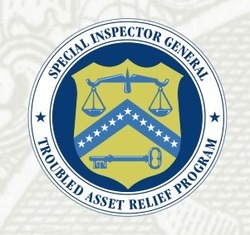Barofsky's aggressive watchdog style is in full display in a document he just submitted to Congress and released to the public. Despite having the unassuming title of Quarterly Report, it is actually the most lucid and comprehensive analysis of the bailout program published to date.
The part of the report that has received most press attentionis the warning that the Public-Private Investment Program promoted byTreasury Secretary Geithner to deal with toxic bank assets is quitevulnerable to fraud. This is just one of a slew of ways that Barofskyargues that the TARP program lacks adequate safeguards. To help make upfor these limitations, the SIGTARP office is proceeding with half adozen audits and is coordinating its efforts with various federal lawenforcement agencies.
Barofsky's 250-page report also contains what amountsto a textbook and statistical abstract about the bailout. He reminds usthat TARP is not one but a dozen different programs with variousobjectives. (Citigroup, for instance, has gotten three different formsof assistance.) He carefully explains each one and provides a wealth ofquantitative as well as qualitative detail. There's even a tutorial onsecuritization. Among the data that I believe are being made public forthe first time are a table showing the dividends paid by banksreceiving capital infusions and an eleven-page appendix providing thestatus of every one of the common stock warrants the TreasuryDepartment received from TARP recipients.
Also included are details of the administrativeand operational costs incurred by the Treasury Department in connectionwith TARP, including $6.9 million to PricewaterhouseCoopers, $5.7million to Bank of New York Mellon and $2 million to Ernst & Youngas well as about $10 million to various law firms.
This single SIGTARP document, produced by anentity with a staff of only 35, does more to clarify the bailout thanthe combined efforts of the Treasury Department, the Federal Reserveand other banking regulators over the past seven months. This is not acase, however, in which clarification creates greater confidence. Onecomes away from Barofsky's report with the sense that the bailout is avast Rube Goldberg contraption that requires careful monitoring.Fortunately, Neil Barofsky is on the case.
Note: Another useful new resource on TARP is the websitejust launched by Bailout Watch, an initiative led by the Center forEconomic and Policy Research, Economic Policy Institute, OMB Watch,OpenThegovernment.org, Project On Government Oversight, and Taxpayersfor Common Sense.

